papa-peppers guide to plant propagation - Pitaya and Prickly Pear
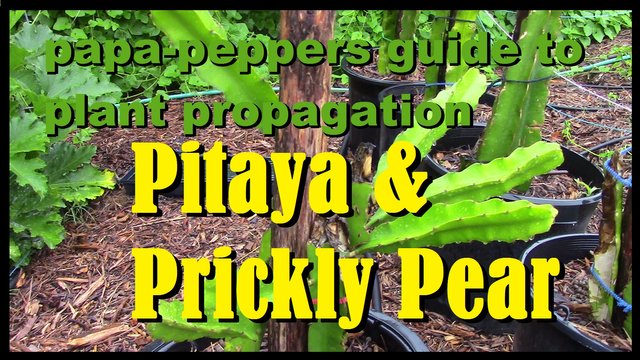
A simple guide to plant propagation of Pitaya and Prickly Pear provided by papa-pepper.
INTRODUCTION
Part of what got me into propagating plants in the first place was living down in New Orleans before Hurricane Katrina. There were so many incredible plants growing everywhere, and since I never owned a car when I lived there, I got to walk around and see a lot of them, up close and in slow motion. You’d see a really neat tiny plant, turn the corner, and notice one forty feet tall. When certain types of cacti would overgrow someone’s yard, they’d simply take a machete to it and cut it back, letting it begin its growing process all over again. The “waste” material that they hacked off they’d simply put on the curb. I got in the habit of picking some of these chopped plants up, and putting them in pots when I got home. Not everything made it, but many survived for years to some. I even wound up selling some of them at a garage sale just the other year and saw some still alive in the persons yard before we moved last fall. That was ten years’ worth of growing in a pot after someone put it on the curb. Not bad!
Once my wife and I got married and started making annual trips to Texas and often Mexico, the varieties of cacti that I saw amazed me once again. I remember her grandmother cooking them with eggs and chiles in the morning, and buying bags full of chopped “nopales” in Mexico for $1 each. Not only were cacti a great looking plant to have in the yard, they were nutritious as well.
Cacti can be an easy plant to propagate, and many taste great. I’ll be covering the Pitaya, A.K.A. Dragonfruit, and the prickly pear pad-type cacti.
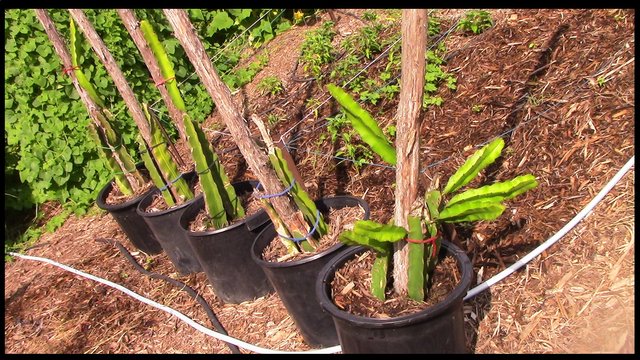
PITAYA
The Pitaya, or Dragonfruit, is an interesting plant. It grows in long segments and is a climber by nature. It will send out little roots into a tree which can both absorb nutrients and water and also hold the plant up. It has been cultivated for its fruit for some time now, and many Pitaya farms and growers exist, all over the world. Since it is a tropical plant, I plan on housing mine in a greenhouse over the winter.
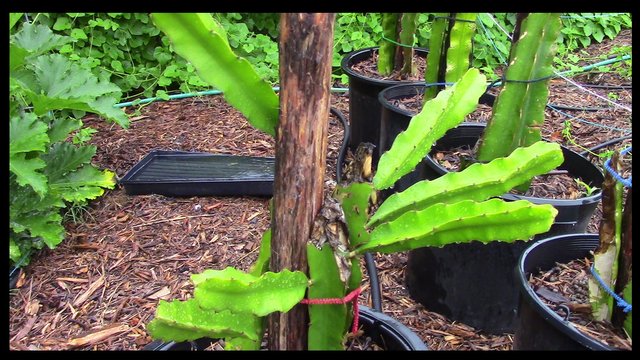
One natural byproduct of growing Pitaya, besides the Dragonfruit itself, is extra segments of the plant. These are generally pruned off by the grower after harvest time, in the winter months. I ordered some online from a grower in Florida last winter. I believe I ordered 15, and he sent me 17. (I love bonuses!). Usually someone getting started as a Pitaya farmer will buy some like I did. As the plants that they bought grow and get too big, they’ll use the cuttings from pruning to make new plants for themselves. Once they’ve got enough growing for themselves, which is sometimes acres and acres, they’ll start selling the cuttings as an additional source of income. For them, buying some plants gives them more plants for free which give them fruit and extra plant pieces to sell. It’s a pretty good deal.
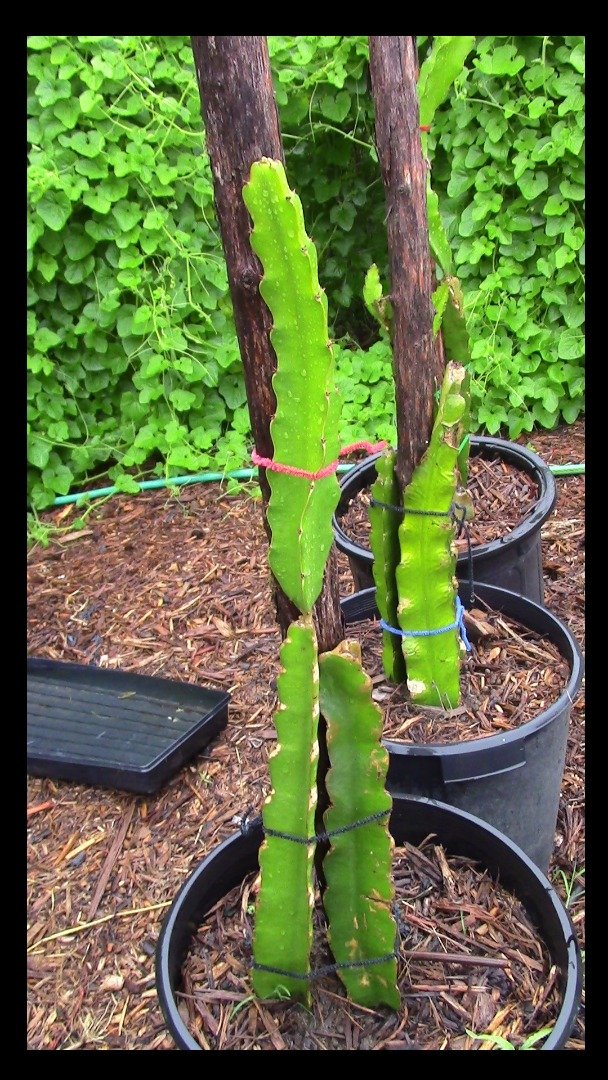
Anyway, when planting a cutting from a succulent or cacti, it is best to let the cut end dry out first. If you put a freshly cut off, broken end of a cactus directly into the soil, there is a good chance that it will begin to rot. Then, it can continue to rot until your whole plant is gone. It is not fun to see, and makes me sad just thinking about it. Once the “wound” on the plant has dried, it is ready to root. One important thing to remember for cacti and succulents is that they generally like good drainage. Even for Pitaya, which love a good, rich, decomposing soil to sink its roots into, you should remember that drainage is important. I used some layers of large and small stones in the bottom of my pots before I ever started adding a mixture of rich soil and sand closer to the top.
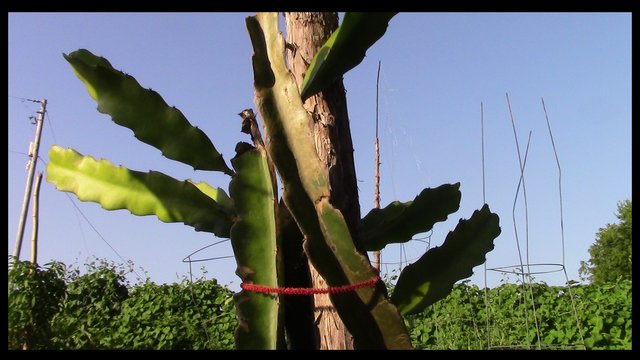
Once the soil has been prepared and the plant is stuck in it, (with the now-dried wounded end sticking into the dirt), the patience begins. Out of sight, somewhere under that soil level, the plant should eventually begin to send out some roots. For now, stored energy within the plant will supply this growth. Next, once some sort of root growth has begun, you should start to see activity above ground, in the form of a new baby segment. If you see this happening, it generally means that the propagation process has been successful. Now, you’ll just have to wait for flowers, and then fruit.
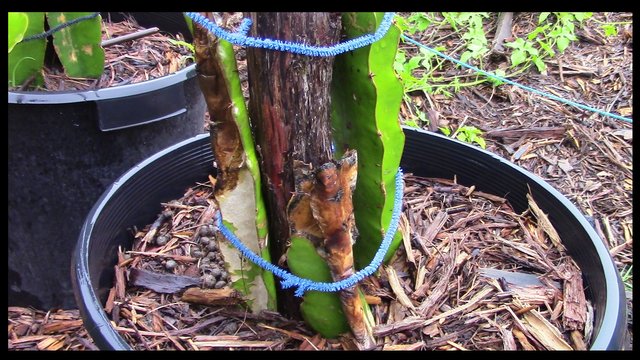
I’ve had quite a bit a variation in the level of success with my Pitaya cuttings. Some have multiple new segments growing, while others have one new segment. Some have died back almost to the ground level, but they still exist, so not all is lost, and one even got a flower started, but it fell off. A few also look like nothing is happening yet, so at least they are not dying back. Success and speed of success will always vary, and each plant is different. What I know for sure is that if you never try, you’ll never succeed. Hopefully, one day, we will have some of our own homegrown Dragon fruit. For now, we’ll just wait and see.
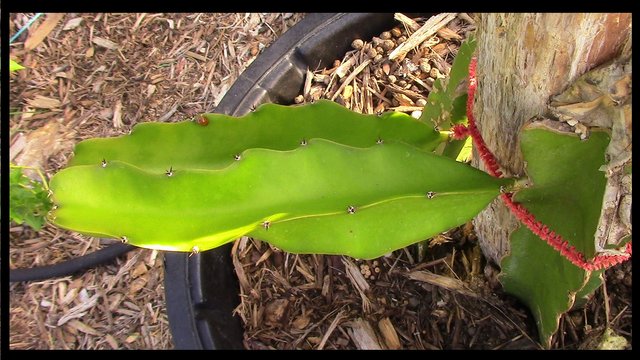
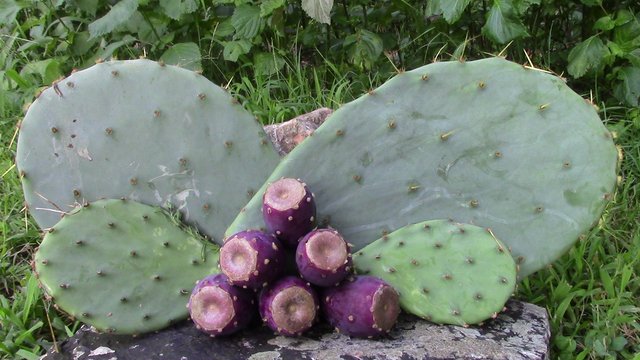
PRICKLY PEAR
It has amazed me lately how many people grow these in their yard and yet have zero interest in eating them. I’ll cover that in my series THE EDIBLE OUTDOORS though. Today, it’s propagation. A new pad, or section, of the parent plant is all that you need to get started. If you know of anyone with some growing in their yard, I’d suggest just asking. I’ve never been turned down, and I’ve definitely asked. In fact, I just got a few more from a guy who gave me some before, and he even let me load up on the ripening fruit. Talk about awesome. (I might seem a little greedy when I say things like that, but consider the situation. I’m about to buy between 8 and 10 acres to hopefully grow food for my family, plant a food forest, and hopefully start a plant propagation business. This man doesn’t really eat the pads or the fruit and has a ton of them growing in his yard. Since he doesn’t me taking a bunch, then the more I get started now, the more I’ll have to work with later.) Anyway, nice man, good deal, awesome!
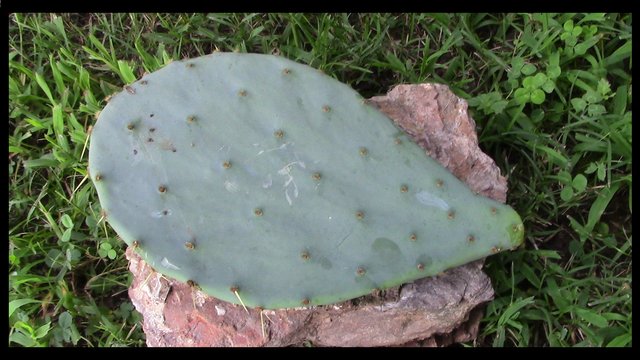
The propagating method for many of these cacti is the same. Once you cut or break off a section, let it dry first.
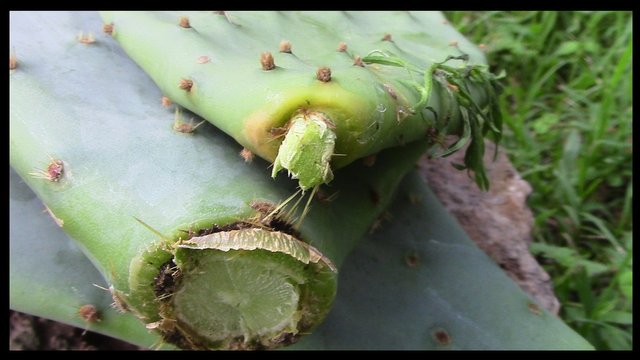
Once it has dried for a few days and “healed” the wound, it is ready for planting. Sometimes, a pad that gets broken off from the parent plant will just start rooting from whatever side it falls on. Much like nodes that I mentioned on the stems of the Passionfruit vine, where you see the spines on the pad is where roots can grow from as well.
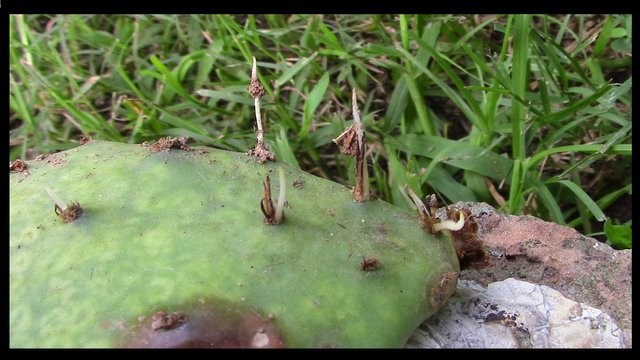
Notice the tiny white roots already reaching out. Remember, even with the best effort and most diligent attention, sometimes a propagation attempt fails. Two similar pads from the same parent planted directly next to one another might not both grow. This is why plant propagators generally attempt to propagate more of a plant than they actually want. They generally expect some loss. Also, going through this process 7 times in a row is not that much more difficult that doing it 4 times.
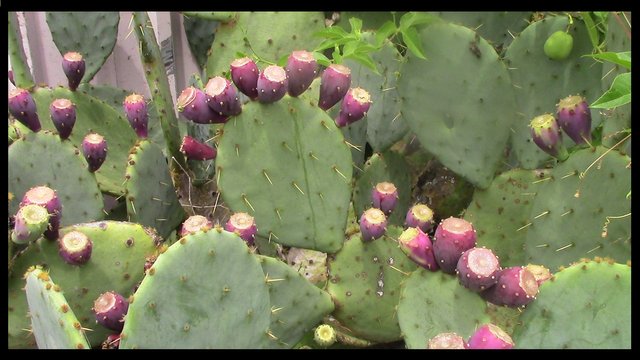
Again, wait, and watch for growth. One of the main reasons that I wanted to grow these cacti is for the fruit. The pads are edible too, which is great, but they are more like a vegetable. The fruit from the plant is more like a, well, fruit. It is sweet, juicy, and red (on this variety anyway). It was great to see multiple cacti planted just this winter both flowering and now fruiting as well. It is certainly rewarding to reap a return on your investment.
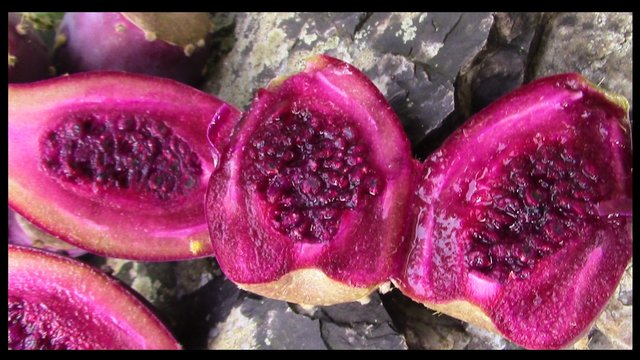
Plus, when we eat the fruit, the fruit is full of hard seeds. These can be saved and planted as well, hopefully to make a brand new generation of cacti for us to eat!
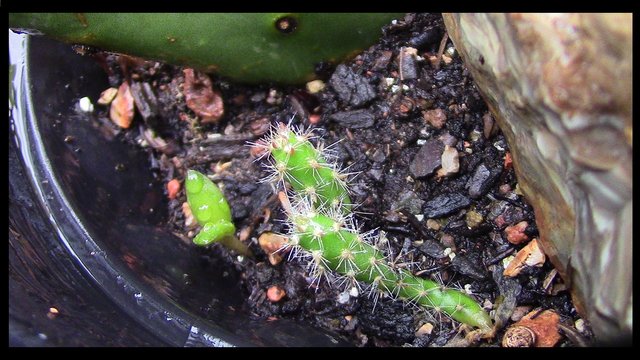
Check out these tiny little guys. We saved some seeds from some fruit we were eating this winter, and here they are, growing strong.
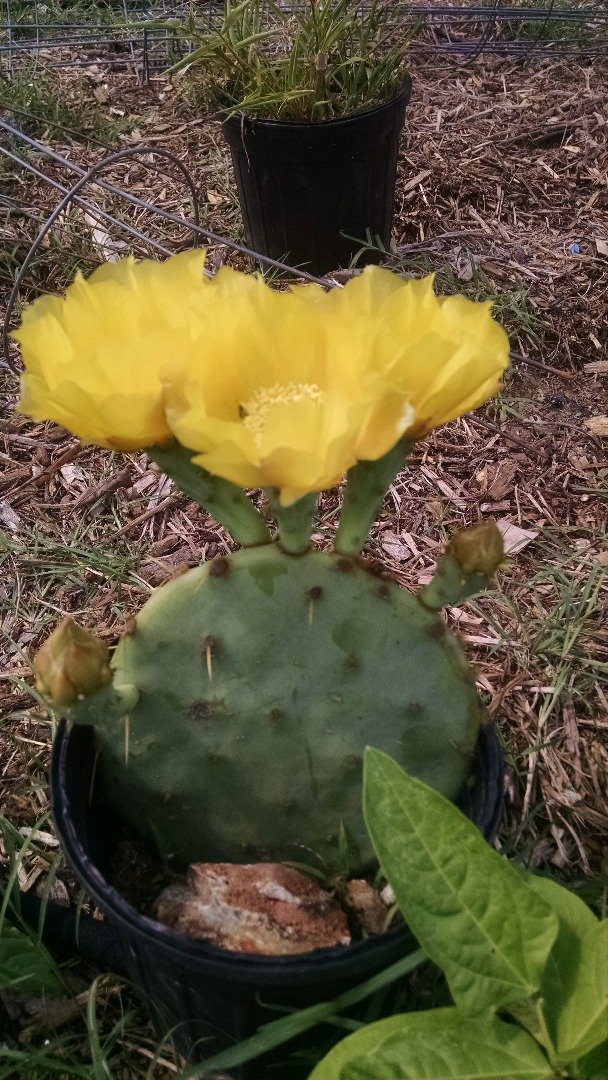
My personal success with Prickly Pears has varied as well. A few just dried up and died. Others grew new pads and some even flowered first.
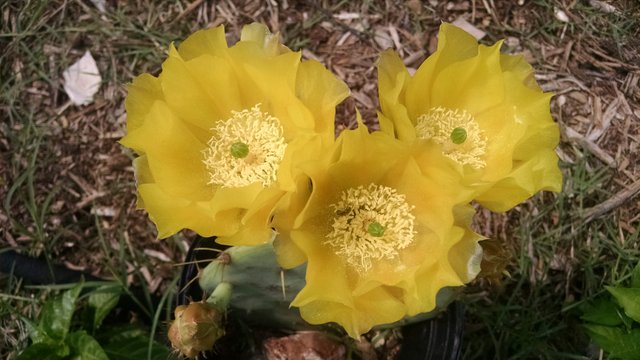
It’s great to know that these beautiful flowers eventually turn into super-tasty fruit. Since some grew new pads, I now have three options. First, I can continue to let the plant grow as is, and get bigger and bigger. Second, I could cut off and eat these newer pads without losing the plant, since the original plant is still rooted. Third, I could remove the new pads and try to propagate new plants by using them, again, without losing the original pad.
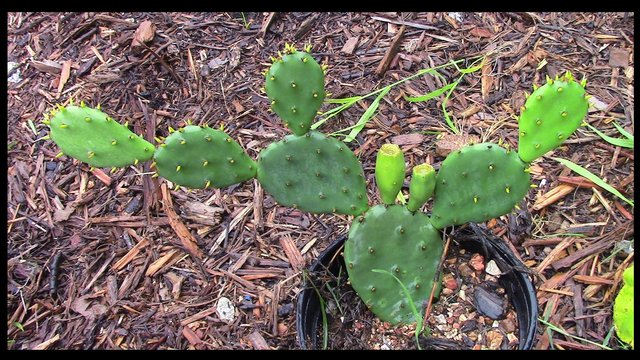
It’s nice to have so many options, especially when it comes to food.
CONCLUSION
Propagating cacti by this method is both common and actually what occurs naturally in the wild. Since the plants are designed in way that the segments are able to break off, they are also designed to root when they do. We can simply tap into this process and use it to our advantage. It doesn’t matter whether cacti can overwinter in your area. A potted one can easily be moved into a green house or even your house for the winter months and put back outside again in the summer. That’s what we did with the Prickly Pears up in Wisconsin and what we’ll do with the Pitaya down here. Actually, there are even varieties of Prickly Pear that are either native to Wisconsin or naturalized there. I remember many yards featuring some pretty nice cacti, even up north.
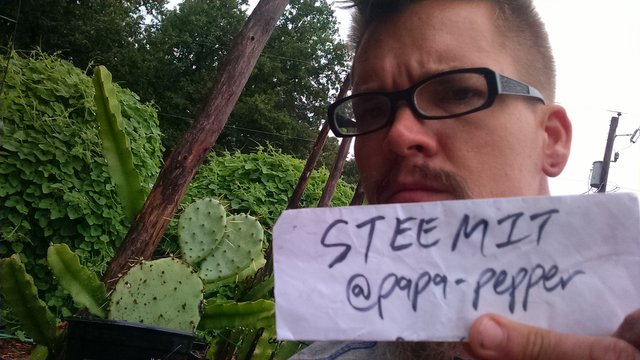
Yet another great post my man, love your use of prickly pear, I used to sit on the beach and eat prickly pear all the time when I was in the wet states. Check out my latest post, let's get the total gardening newbies so bit-size info so they can start tackling your sweet ideas! https://steemit.com/gardening/@brownsgreens/just-grow-food-garden-site-prep
Thanks, I appreciate what you're up too.
You are the man papa-pepper , I will be following you
I'm starting to cover some that can work in Arizona, huh? I think the Date Palm can grow out there too. I just sprouted mine for fun and will probably try planting them in Texas. Thanks for following, and the compliment. I'll try to make it worth your time.
Another great info post from @ papa-pepper . We have boatloads of prickly pear around here, grows wild out in pastures etc. ranchers down in South Texas will burn the spines off of it with propane torches so the cattle can graze on it.
Yeah, it's just part of that DELICIOUS Texas landscape...
Speaking of that, I saw that my wild plum tree out in the back pasture still has some plums on it, they were about the size of a nickle, and only about 20 of them , but it's a start
That's on my edible outdoors to do list too. That's just a few, but it's soooooo worth it. Our old plum tree in Wisconsin gave us about 40 or 50 before we left.
ahaha, great post. Thank you :)
Love your post. I would like to share my pitaya https://steemit.com/fruits/@justamother/dragonfruit-aka-pitaya